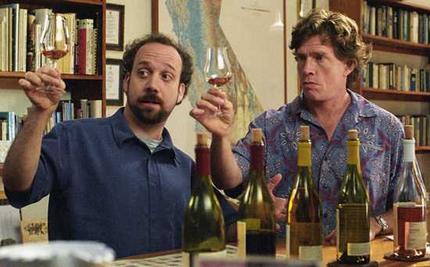1. Plan your visits
Visit wineries clustered together, such as the ones in Niagara-on-the-Lake area. Visit no more than three to five a day: two in the morning, one for lunch and one or two in the afternoon. That leaves you time to taste and talk. (I know, I crammed in more visits, but a drink writer in wine country is like those stunt drivers in car commercials—you’re not really supposed to do those tricks in real life.) Go to both small and large places to get a sense of the range of wines produced.
2. Designate a driver
If you refuse to spit, you need to pick a designated driver who won’t imbibe (or inhale). And you need to know when to quit: Ontario law states that wineries can only serve a maximum of four one-ounce samples per person. 
3. Take a cooler
Pack a picnic lunch in a cooler, and then you’ll have a place to store the wines that you buy, so they don’t cook in the trunk. But most wineries will ship anywhere in the province, and many across the country—so think twice before lugging those bottles around: a case of 12 weighs 37 pounds. If you do buy a bottle, get one that’s only available at the winery—and ask the vintner to sign it.
4. Drive a comfy car
A car with reclining seats and clouded glass is ideal for those between-winery naps in parking lots. Even better, rent a stretch limo.
5. Avoid strong smells
Perfume, cologne and aftershave all interfere with the wine aromas, so skip them when you’re going to taste.
6. Wear dark clothing
Even if you’re an expert spitter, the person (or wine writer) next to you might not be. Avoid t-shirts that read “Gonna drink myself stupid!”
7. Call ahead
If your favourite winery isn’t open to the public, call to ask if you can drop by anyway. Many will welcome fans by appointment.
8. Go early
Tasting rooms are much less crowded in the mornings before lunch, and less packed on weekdays than weekends. And even though cabernet at 10 a.m. may not sound appealing, your palate is at its best in the morning.
9. Avoid tour buses
If you see a bus in the winery parking lot, come back later. (Also avoid people in polyester suits wearing stickers that say “Hi! My name is…”)
10. Spit
Spitting out your wine—expectorating—is just something you need to do. And don’t feel guilty about dumping what’s left of your tasting sample in the spit bucket too.
(But avoid rinsing your glass in it, or even worse, drinking from as they did in the movie Sideways.)
11. Taste and savour
Tasting several wines is not only fun, it’s instructive: you can compare different styles when you try them side by side. (Of course, you can do this at home, but it’s expensive to open four or more bottles at once.)
12. Start with light and dry
Begin with light, dry sparkling and white wines then the lighter, dry reds. Progress to whites and reds that are more full-bodied and oaked. Finally, try sweet wines, starting with moderately sweet (late harvest) and progressing to sweeter still, such as icewine, sauternes, port. Why? You want each wine to create it’s own impression on your palate and not be overwhelmed by the last wine.
13. Experiment
Try wines you’ve never tasted before, widen your range, surprise yourself. Ask the tasting room staff which wine the vintner is best known for.
14. Take a notebook
It doesn’t make you a wine nerd to want to remember the wines you’ve tasted.
15. Ask questions
Unless they’re swamped with visitors, most tasting room personnel love to chat about their wines and the region. Start by asking how their wine differs from that of nearby wineries, and which dishes it would go well with.
16. Eat
Be sure to have breakfast before you go, and take a snack for on the road—food helps to absorb the alcohol. Eating bland crackers between sips will also keep your palate from getting overloaded. Avoid eating garlic and spicy food at lunch; wait until the tasting is over. Dine at winery restaurants for a great food and wine pairing experience.
17. Drink water
One effect of even just tasting alcohol is that you get dehydrated. Pack several bottles of water in the car, and take a swig often.
18. Take the kids
Most wineries are set in beautiful country locations where children can play outdoors. And even if the kids aren’t drinking for a few more years, they can still be fascinated by these grape farms, and the process of making wine. Just keep them away from any breakables in the tasting room, and from the farm equipment outside.
19. Ask to be added to the mailing list
Some wineries produce such small quantities of wine that you need to be part of their loyal customer base to buy any. A visit to the winery is a great time to express your interest. (But avoid the approach of taking out a thick wad of bills, fanning under the owner’s nose and asking, “Whaddaya got that’s good and pricey?”)
20. Get your bottle signed
If the winemaker is available, ask him or her to sign a bottle (that you buy). Don’t try this at harvest time. Signed bottles are great gifts and make for special memories when you open them.
Posted with permission of CTV.








